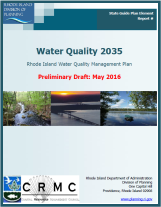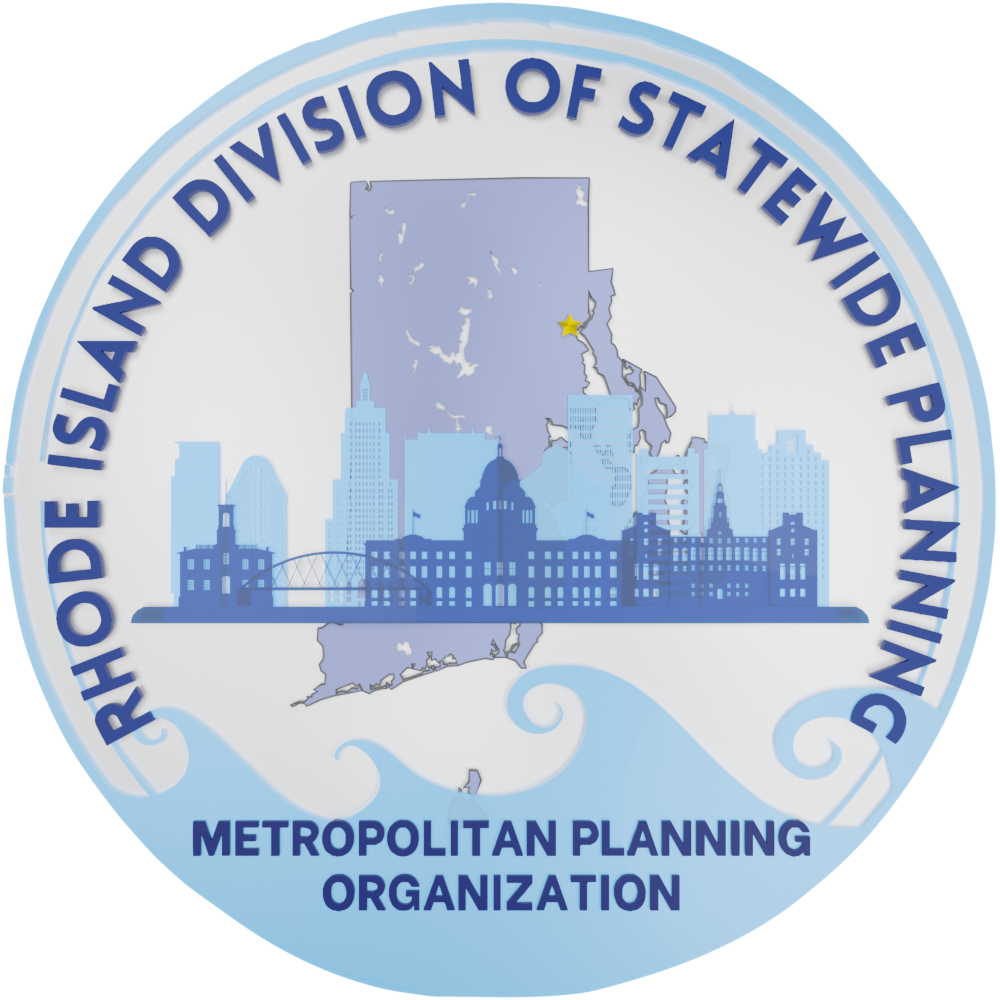Water Quality And Watershed Plan
The Land Use Unit partnered with the Department of Environmental Management and the Coastal Resources Management Council and a volunteer Advisory Committee to update the existing nonpoint source pollution management plan and create a new element of the State Guide Plan. This new Element involves consolidating and rescinding the following existing State Guide Plan Elements that had protection and restoration of water quality as primary purposes into a single document:
- Rivers Policy and Classification Plan (last amended 2004) – Element 162
- Comprehensive Conservation and Management Plan for Narragansett Bay (1992) – Element 715
- Nonpoint Source Pollution Management Plan (1995) – Element 731
- Blackstone Valley Region Water Resources Management Plan (1982) – Element 711

Water Quality 2035 stresses the ongoing need for careful management of our fresh and salt water resources. Maintaining acceptable quality and quantities of water while balancing the needs of natural systems with human activity and sustainable development can be complex. Goals and policies for the protection and restoration of water quality and aquatic habitats are proposed. Trends on water quality and aquatic habitat conditions and the current status of Rhode Island waters along with water quality impairments and threats are discussed. The Plan outlines a management approach to address the issues, details the various roles and responsibilities, and discusses priorities for water quality management. In Part 5, using watersheds as the basis for accomplishing ongoing management and the integration of planning activities is proposed. The Plan highlights 4 overarching management issues, 26 pollution sources and other stressors to aquatic habitat, and presents management policies and actions for each to achieve the clean water goals. Achieving healthy aquatic ecosystems and the Vision of the Plan will require sustained and expanded efforts to prevent and abate pollution and habitat degradation. Substantial progress has been made in our State by controlling the discharge of pollutants from sanitary and industrial wastewater. However, managing the more diffuse sources of pollution associated with human land uses, including stormwater runoff, continues to present significant challenges. As indicated in the Implementation Table in Part 7, a wide range of actions will be needed to advance progress toward the water quality goals.
Public Presentations
Advisory Committee
Meeting Notes
- April 12, 2016 Advisory Committee
- January 26, 2016 Advisory Committee
- October 20, 2015 Advisory Committee
- April 8, 2014 Advisory Committee
- March 11, 2014 Advisory Committee
- Feburary 25, 2014 Advisory Committee
- January 28, 2014 Advisory Committee
- December 17, 2013 Advisory Committee
- November 26, 2013 Advisory Committee
- October 22, 2013 Advisory Committee
- September 24, 2013 - Kick-Off Advisory Committee Meeting
Other Resources and Helpful Links
- Issues Brief: Economic Value of Water Quality August 2014
- Technical Paper 163 Road Salt
- Presentation on Development of the Water Quality Management Element of the State Guide Plan
- Presentation on Planning for Source Water Protection
- Issue Brief on Water 2030 for Municipal Planners
- Issue Brief on Water 2030 for Water Suppliers
- RI Coastal Resources Management Council
- RI Department of Environmental Management – Office of water Resources
- United States Environmental Protection Agency – Water Information
